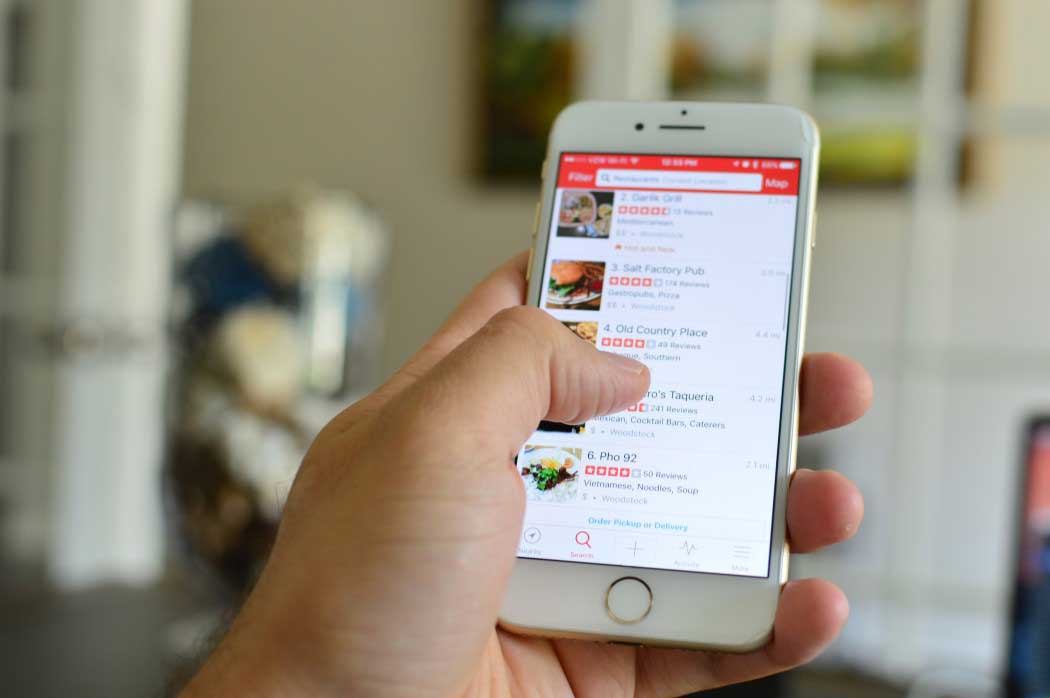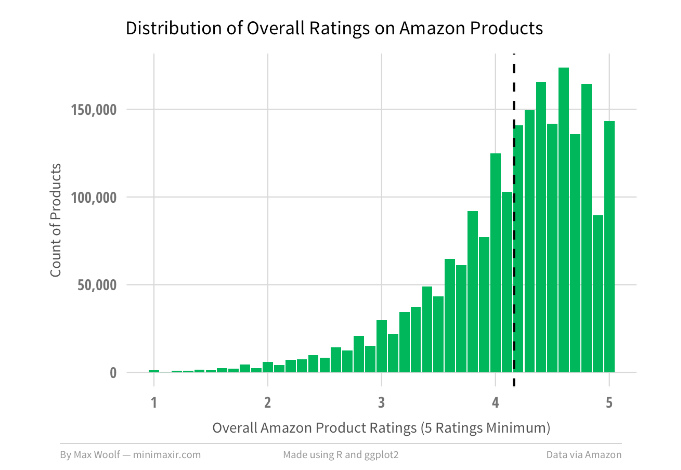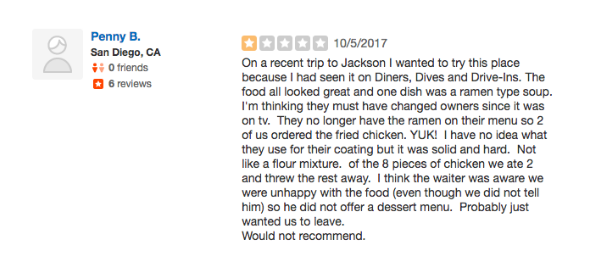Respond To Negative Feedback Online: A Complete Guide
Sitting down at the four-person table next to the window, you take a minute to scour the menu. Torn between the fish tacos and margarita pizza, you go with the fish tacos because you’re craving cilantro.
You continue making conversation with your lunch date when the waiter comes out bringing you a cheeseburger. It wasn’t what you expected.
Usually, you can work around a wrong order but you’ve stopped eating red meat. You sit there thinking about whether or not to speak up when the waiter comes to check on you and you say “So sorry, this isn’t what I ordered.” She looks back at you, shrugs her shoulders and walks away.
Imagine that, a waiter knowing you didn’t get what you expected and ignoring you. This in-person experience happens all the time online. Customers will leave a negative review, tweet about their experience, even email the company directly and it goes unanswered. They’re doing this because their expectations were not met.
As hard at it can sometimes be to address a comment where your company is shown in a negative light, this is a huge positive and opportunity. Knowing what is being said about your company online shows you what to celebrate, what’s going well, as well as how you can improve.
Why respond to negative feedback?
There are three key opportunities when responding to negative reviews and comments online:
- customer retention
- free advertising
- actionable feedback
It’s not enough just to listen though, it’s critical to respond. This reinstills faith in the original customer as well as shows customers following along that you’ll listen to their feedback, creating a feedback loop. We all know that it’s cheaper to retain a customer than acquire a new one. By facing negative reviews head-on and graciously resolving outstanding issues, you are helping your bottom line.
Responding to the reviews, tweets, Facebook comments, and more serves as free advertising. Tuff also manages pay-per-click campaigns and the R.O.I on these are a bit easier to prove. But, these responses are important messaging. You have the opportunity to show everyone that your company is professional, that you hold yourself accountable and you care about delivering a great customer experience.
The final opportunity is the most important. When a customer takes the time to leave a review about your company or send a tweet about something they think could have been better, they’re giving you actionable feedback. For the one person speaking up, there are probably many more who had a similar experience and kept it to themselves.
Whether you own a restaurant, offer a service like plumbing or are building an online product, you’re designing the experience for your customers — not for you.
These three factors: customer retention, free advertising, and the opportunity to improve are reason enough. It turns out, though, that negative reviews aren’t inherently a bad thing. Studies have shown they can help instill credibility and trust. Consumers get it, they know people are going to have a bad day or even that their taste is different than Sally who hated the french fries. A company with thousands of only 5-star reviews seems a little shady. Negative reviews might even highlight something positive for the next person.
PowerReviews set out to examine this shift in consumer expectations by surveying more than 800 American consumers. One thing they found is that “82% of shoppers seek out negative reviews; among shoppers under 45 this number jumps to 86%”.
Finally, negative reviews aren’t as common as you might think. While it’s critical to respond to these, it’s not going to take a huge chunk of your time. In a study about Amazon by Max Woolf he found, on average, products with at least 5 ratings have an average rating of 4.16.
How to respond to negative feedback
When a customer takes the time to review your service or product, they’re looking for you to give them you E.A.R. This is the formula we teach at Tuff for graciously responding to online criticism.
Empathize: Put yourself in their shoes. What emotion would you be feeling if you were them?
Acknowledge: Specifically, address their comments, match their language and reuse some of their words.
React: The first two pieces are absolutely key. If you’re able to effect change and address their problem, do it.
If you take a look at Yelp, you’ll notice there are a fair few missed opportunities with unanswered negative reviews. To demonstrate E.A.R. in action, we’ve pulled 3 unanswered reviews to show you how we’d respond.
Examples
Empathize: Penny, I am so sorry to hear that you and your group had a bad experience when dining with us. I got into this business because of my love for food and I know how disappointing it can be when you are excited to try a certain dish you’ve heard great things about and then it’s no longer on the menu.
Acknowledge: With ramen being off the menu, the fried chicken being solid and hard, and the waiter not offering a dessert menu we definitely could have done better.
React: We rotate our menu depending on seasonal ingredients and will work to make that clearer. I’m also going to check in on the quality of our fried chicken and coating to learn more about what happened to your dishes. Thank you so much for taking the time and if you return to Jackson, I’d love to have you come in and try again!
Empathize: Hey TamarA, oh gosh! I imagine that was quite frustrating, especially since it sounds like you’ve had better experiences in the past.
Acknowledge: We really dropped the ball on your latest visit. I apologize for the patronizing service, we try to hold all employees to the highest standard.
React: As a manager, I take responsibility for the waiter’s actions. It’s my job to make sure they have the proper training and resources to perform their best. Would you be up for giving me a call at XXX-XXX-XXXX? I know we’ve already taken a lot of your time but I’d love to learn more specifically about the service so I can help our staff improve.
Empathize: Hey Doctor L, thanks so much for taking the time to review us. It sounds like we let you down with the food preparation. As a San Francisco resident, I know how crazy prices can be and we should do a better job providing context on the cost of the upgrade and the impacts seasonality have.
Acknowledge: We work really hard to make sure we’re serving the freshest ingredients. I appreciate you going into specifics with the bacon and chives. It can be tricky at times to appeal to all tastes and having details on how you would have preferred the bacon texture and fewer chives is really helpful.
React: I’ll mention these notes to our culinary team and explore with other management team members how we can help clarify the upgrade charge. Thank you!
Summary
You need to make sure you’re replying to online negative feedback about your business. There’s a perception that it can be all-consuming but it is critical for three reasons (among many more): customer retention, free advertising, and actionable feedback.
When met with these comments, remember to approach the conversation graciously and without ego. The person took the time to help your business improve and you should view this as an opportunity.
As you respond, remember E.A.R: empathize, acknowledge, react.
If you’re struggling with how to respond to negative feedback, we hope this guide helps! If you’d like to learn more, talk about customer retention strategies, or go through specific examples of negative feedback, we’re all E.A.R.’s.
Sign up for a free growth strategy session with Tuff.
We’d love to work with you.
Schedule a call with our team and we’ll analyze your marketing, product, metrics, and business. Then, present a Growth Plan with actionable strategies to find and keep more engaged customers.
Mary is a growth marketer at Tuff. She specializes in Customer Experience, Email Strategy, Copywriting and Chat. She also runs on coffee and peanut butter pretzels.








